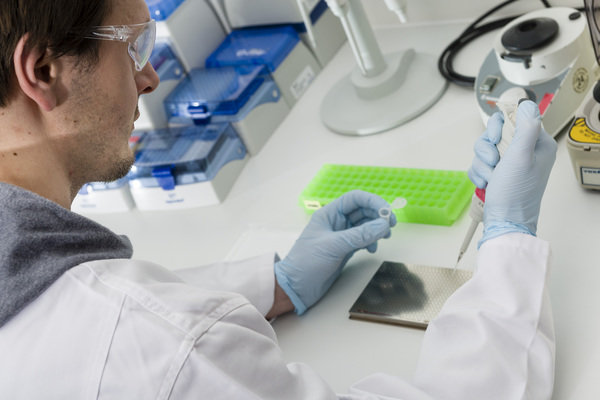
Improved MALDI-Matrix for Glycoconjugates
Motivation
Matrix-assisted laser desorption/ionization time-of-flight mass spectrometry (MALDI-TOF-MS) has become a standard method in the field of proteomics by combining fast and reproducible measurements with high mass accuracy. Peptides can be analyzed with high confidence, using standard MALDI-matrices like 2,5-dihydroxybenzoic acid (DHB), and α-cyano-4-hydroxycinnamic acid (CHCA). An upcoming field of application for MALDI-TOF-MS is the analysis of glycoconjugates, like glycans and glycopeptides. Compared to peptides, those glycoconjugates have different requirements on the MALDI-matrix that is used. Here the development of new MALDI-matrices can greatly improve the detection and quantification of glycans and glycopeptides.

Aim of the Project
For MALDI analysis of glycans and glycopeptides the choice of matrix is crucial in minimizing desialylation by mass spectrometric in-source and metastable decay. Here we evaluated the potential of 4-chloro-α-cyanocinnamic acid (Cl-CCA) for MALDI-TOF-MS analysis of labile sialylated tryptic N-glycopeptides and released N- and O-glycans. Similar to 2,5-dihydroxybenzoic acid (DHB), but in contrast to α-cyano-4-hydroxycinnamic acid (CHCA), the Cl-CCA matrix allowed the analysis of sialylated N-glycans, O-glycans and glycopeptides in negative ion mode MALDI-TOF-MS, which clearly demonstrates the potential of this rationally designed matrix.
